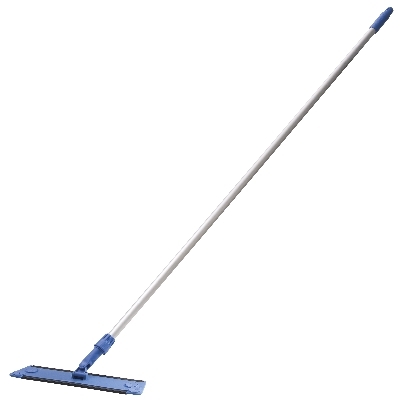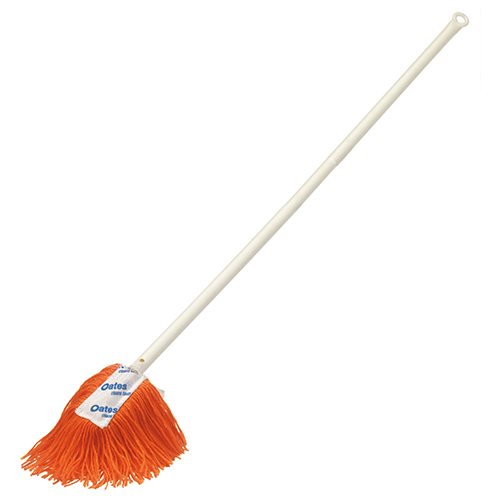How to choose the correct mop?
With such a huge range of mops available on today’s market, it’s more overwhelming than ever to try & choose a suitable one. Let’s take a look at a few of the more common styles & what they’re designed for.
1. FLAT MOPS
These feature a flat head generally in the shape of a rectangle & can be used for either wet or dry cleaning. They are ideal for use on smooth, hard surfaces such as timber, tiles, vinyl planking or polished concrete. Due to the variety of sizes available, they are often a primary choice for those wanting to maximise efficiency & cover large surface areas very quickly. Flat mops are most commonly designed for use with a microfiber pad for general mopping & cleaning, however, they can also be paired with a slightly more abrasive pad ideal for scrubbing. The velcro backing on the pads allow them to easily be interchanged for different tasks & they are often machine washable. It is important to note that you should avoid washing any microfibre with cotton or other materials as they can be damaged. It is also suggested to avoid bleach, fabric softener & excessive heat when laundering microfiber.
Features & Benefits:
- Ideal for a variety of hard surfaces.
- Time-efficient due to large sizes available.
- Interchangeable microfibre pads to reduce the risk of cross-contamination.
- Can be used wet or dry.
Cons:
- When using a wet mop, you need to regularly dampen with chemicals. Inconvenient for those without spray attachment built into the design.
- Microfibre pads can be damaged with excessive chemical/heat. Care needs to be taken with laundering.
- Generally takes up more space than traditional string mops. Can be an issue if limited storage is available.
2. STRING MOPS
Predominantly used for domestic cleaning in & around the home, traditional String Mops are used as a part of a mop & bucket system. They are often a more affordable option, however, the mop heads do require regular replacement due to the shedding of lint & build-up of bacteria. Some traditional string mop heads are able to be laundered which can increase their life span. Their fibres are often more absorbent than those of a flat mop, providing excellent absorbency capabilities for spills & accidents. However, this means you will often use significantly more products & chemicals when cleaning. Cross-contamination is very common with the use of string mops as every time the mop is placed into the bucket, you are spreading the germs & bacteria.
Features & Benefits:
- Affordable.
- Very high absorbency ideal for spills.
Cons:
- Bucket & solution is required.
- Cross-contamination every time mop is put back into the bucket.
- Lint & shedding is very common with this design.
3. DUST MOPS
Often a large rectangular shaped head — similar to that of a flat mop. However, dust mops generally feature a lambswool, ‘modacrylic’ microfibre or various synthetic heads which is ideal for picking up & trapping minute dust particles. These are solely recommended for dry cleaning & are suitable for use on walls, ceilings, floors as well as light fixtures & fans etc. They are often machine washable, however, caution should be taken to avoid excessive heat & harsh chemicals such as bleach & fabric softener due to the nature of the material. These are commonly seen in both the domestic scenario as well as large commercial lots. Due to the various sizes available, they are a very popular choice for efficient sweeping of large spaces.
Features & Benefits
- Available in a large variety of sizes.
- Pads are often reusable & machine washable.
- Suitable for dry mopping of hard surfaces.
Cons
- Consistent laundering is required to prevent the transfer of dust particles.
- Not suitable for use as wet mop.


